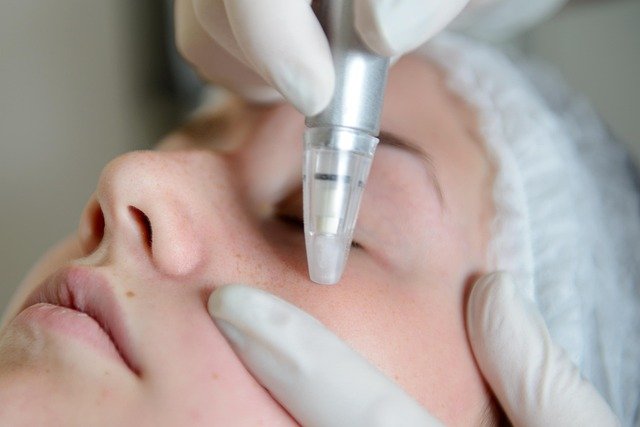Bioelectric Skincare: The Future of Anti-Aging
In a world where beauty trends come and go faster than seasons change, a groundbreaking innovation is quietly revolutionizing the skincare industry. Bioelectric skincare, a fusion of cutting-edge science and age-old wisdom, promises to redefine our approach to anti-aging. This nascent technology harnesses the body's natural electrical currents to stimulate cellular regeneration, offering a non-invasive alternative to traditional skincare methods. As we delve into this electrifying realm, we'll explore how bioelectric treatments are poised to transform our daily routines, challenge conventional beauty standards, and potentially unlock the secret to youthful, radiant skin. From its origins in wound healing to its current applications in cosmetics, bioelectric skincare is sparking a new era in the quest for timeless beauty.

The technology typically involves devices that deliver precise, low-level electrical currents to the skin. These currents are designed to mimic the body’s own bioelectrical signals, triggering a cascade of cellular responses. One of the primary mechanisms is the activation of ion channels in cell membranes, which can increase the production of ATP (adenosine triphosphate), the energy currency of cells.
Moreover, bioelectric stimulation has been shown to enhance the production of collagen and elastin, two key proteins responsible for skin elasticity and firmness. It also promotes better circulation and lymphatic drainage, which can reduce puffiness and improve overall skin tone.
Historical Context and Key Developments
The concept of using electricity for therapeutic purposes dates back to ancient times, with early civilizations using electric fish to treat ailments. However, the modern understanding of bioelectricity began in the 18th century with Luigi Galvani’s famous experiments on frog legs, which demonstrated the electrical nature of nerve impulses.
In the medical field, bioelectric therapies have been used for decades in wound healing and pain management. The transition to skincare applications began in the late 20th century, as researchers started to understand the role of bioelectricity in skin health and regeneration.
A significant breakthrough came in the early 2000s when scientists discovered specific bioelectric patterns associated with regeneration in certain animals, such as salamanders. This led to increased interest in harnessing bioelectricity for human tissue regeneration, including skin.
In recent years, advancements in nanotechnology and bioengineering have allowed for the development of more sophisticated and targeted bioelectric skincare devices. These range from at-home microcurrent devices to professional-grade treatments offered in high-end spas and dermatology clinics.
Current Industry Trends and Expert Analysis
The bioelectric skincare market is experiencing rapid growth, with industry experts projecting a compound annual growth rate of over 8% in the coming years. This surge is driven by increasing consumer demand for non-invasive anti-aging solutions and a growing preference for technology-driven skincare.
Dr. Elena Rossi, a leading dermatologist specializing in bioelectric therapies, notes, “We’re seeing a paradigm shift in how we approach skin rejuvenation. Bioelectric treatments offer a unique advantage by working with the body’s natural processes rather than against them.”
One of the most exciting trends is the development of personalized bioelectric skincare protocols. Advanced diagnostic tools can now map an individual’s skin bioelectricity, allowing for tailored treatments that address specific concerns with unprecedented precision.
Another emerging trend is the integration of bioelectric technology with traditional skincare products. Some companies are developing serums and creams that enhance the effects of bioelectric treatments or even contain nanoparticles that respond to the skin’s natural electrical currents.
Benefits and Market Relevance
The appeal of bioelectric skincare lies in its potential to offer visible results without the risks associated with more invasive procedures. Users report improvements in skin texture, tone, and firmness, with some studies showing significant reductions in the appearance of fine lines and wrinkles.
From a market perspective, bioelectric skincare sits at the intersection of several key consumer trends: the desire for natural, non-toxic beauty solutions; the growing interest in high-tech, scientifically-backed treatments; and the increasing demand for personalized skincare regimens.
Dr. Michael Chen, a cosmetic scientist and industry consultant, explains, “Bioelectric skincare has the potential to disrupt the traditional anti-aging market. It offers a unique value proposition that appeals to both tech-savvy millennials and older consumers looking for effective alternatives to surgical interventions.”
The technology’s versatility is also driving its market relevance. Bioelectric treatments can be tailored to address a wide range of skin concerns, from acne to hyperpigmentation, making it a versatile addition to skincare routines across demographics.
Industry Impact and Future Prospects
The rise of bioelectric skincare is causing ripples across the beauty industry. Traditional skincare brands are investing heavily in research and development to incorporate bioelectric elements into their product lines. Meanwhile, a new wave of tech-focused beauty startups is emerging, dedicated solely to bioelectric solutions.
This shift is also influencing beauty education and professional training. Estheticians and dermatologists are increasingly seeking certifications in bioelectric therapies, recognizing it as a valuable skill in an evolving market.
Looking to the future, experts predict that bioelectric skincare will become more accessible and integrated into daily routines. Dr. Rossi envisions, “In the next decade, we might see bioelectric skincare devices become as common in households as electric toothbrushes are today.”
The technology is also opening up new avenues for research in skin health and aging. Scientists are exploring the potential of bioelectric stimulation in treating skin conditions like eczema and psoriasis, as well as its role in accelerating wound healing and scar reduction.
As bioelectric skincare continues to evolve, it promises not just to change how we care for our skin, but also to deepen our understanding of the complex relationship between electricity and biology. In this electrifying new frontier of beauty, the possibilities are truly limitless.





